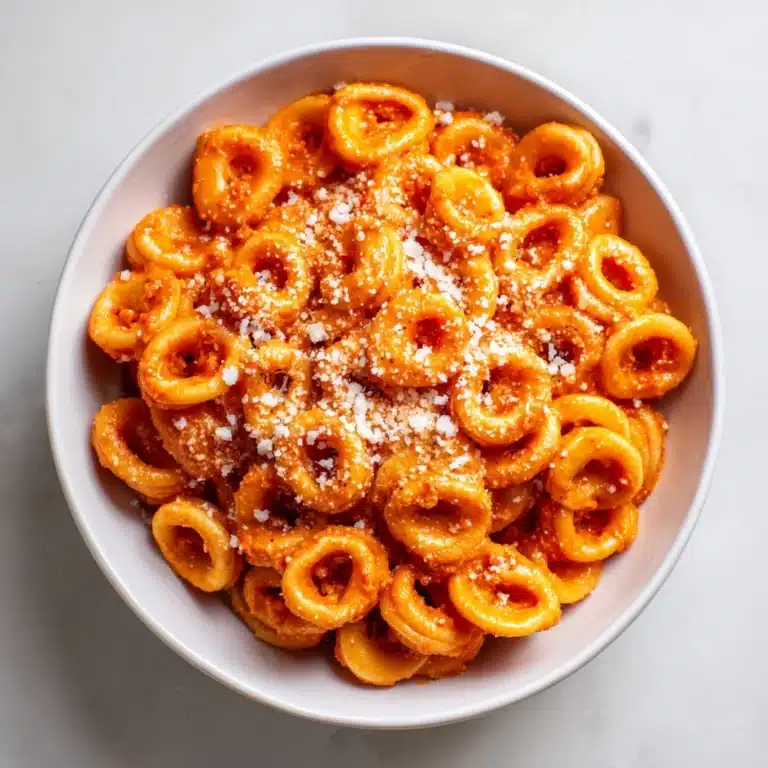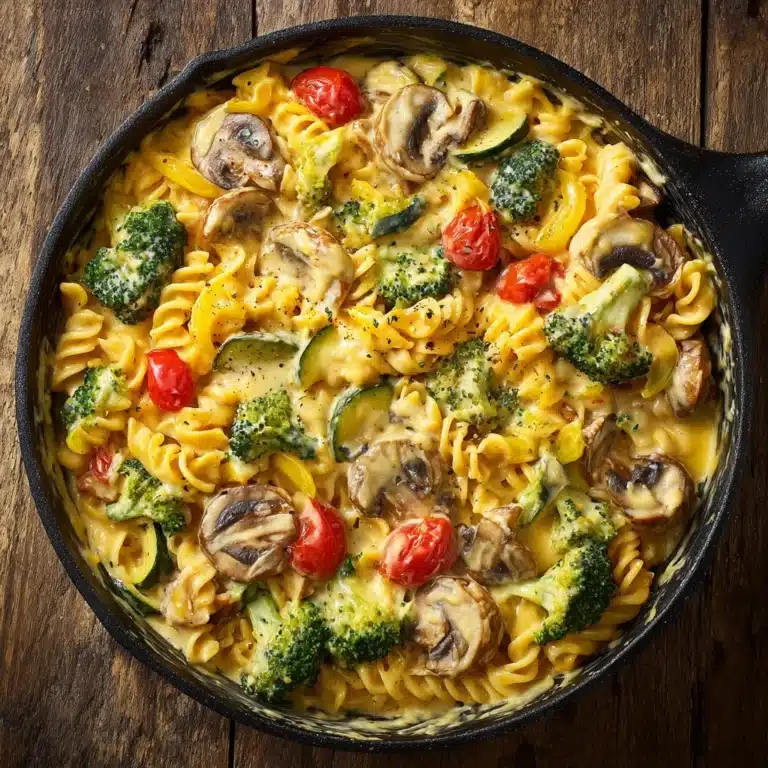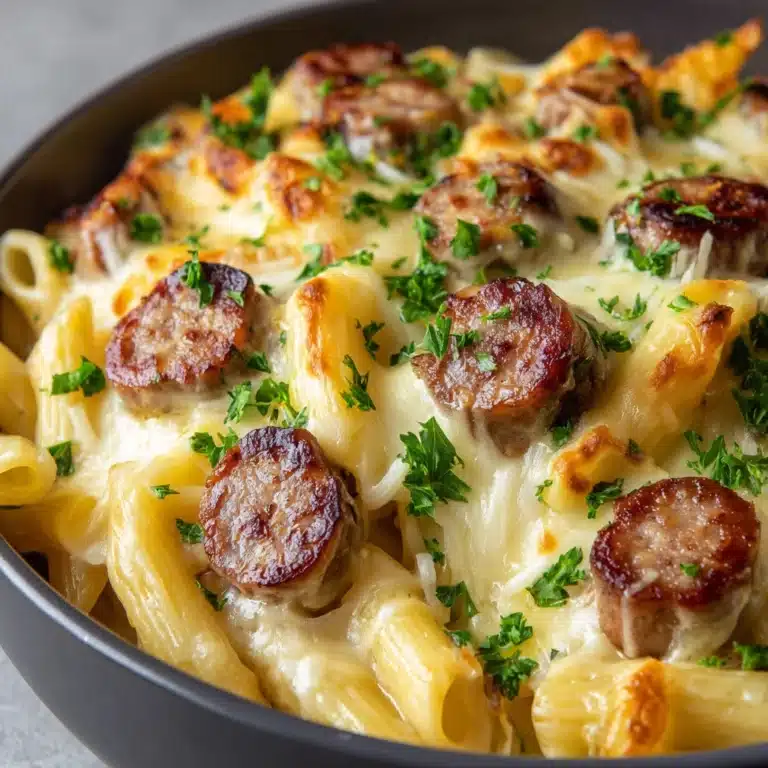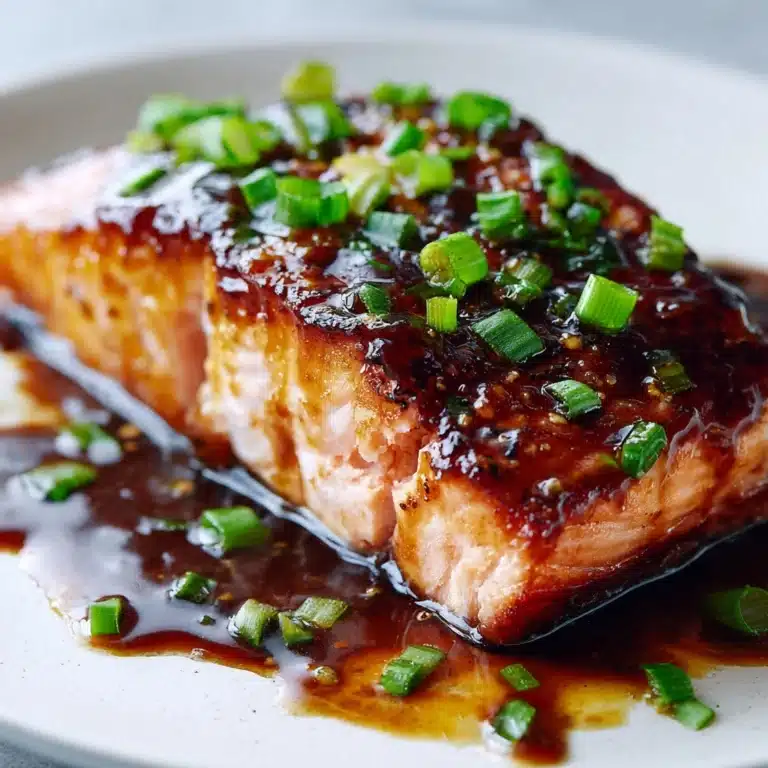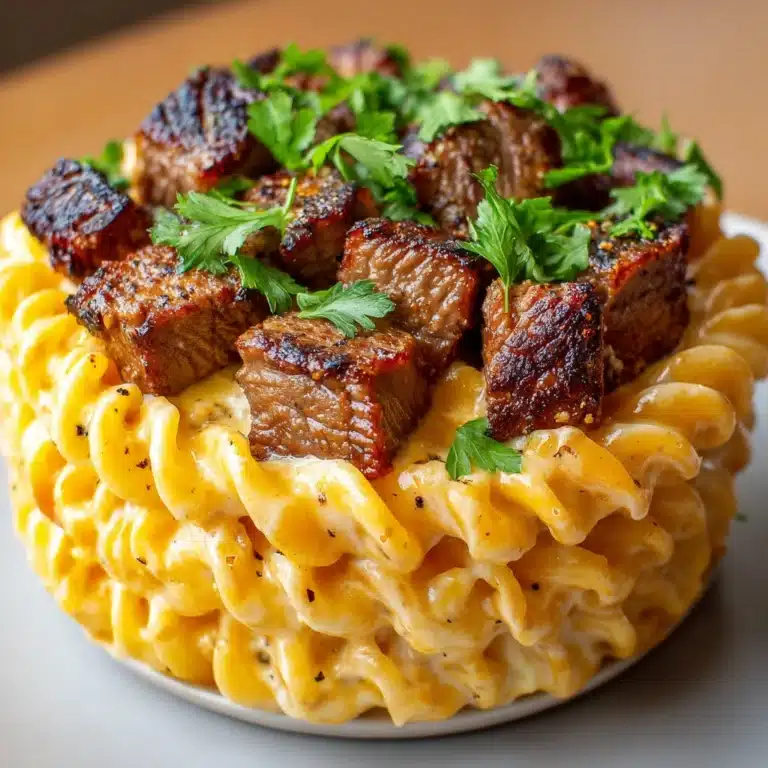Waffle Recipe
Get ready to fall in love with Cacio e Pepe, the Roman classic that proves the magic of simple, high-quality ingredients. This soul-warming pasta dish delivers surprising depth, creamy texture, and plenty of bold, peppery character using only cheese, black pepper, pasta, and a swirl of starchy water. There’s something transcendent about the way the Pecorino Romano clings to springy noodles, creating a glossy, luxurious sauce, all ready in about 20 minutes. If you thought you needed an armload of ingredients for true Italian comfort food, this dish will absolutely change your mind.
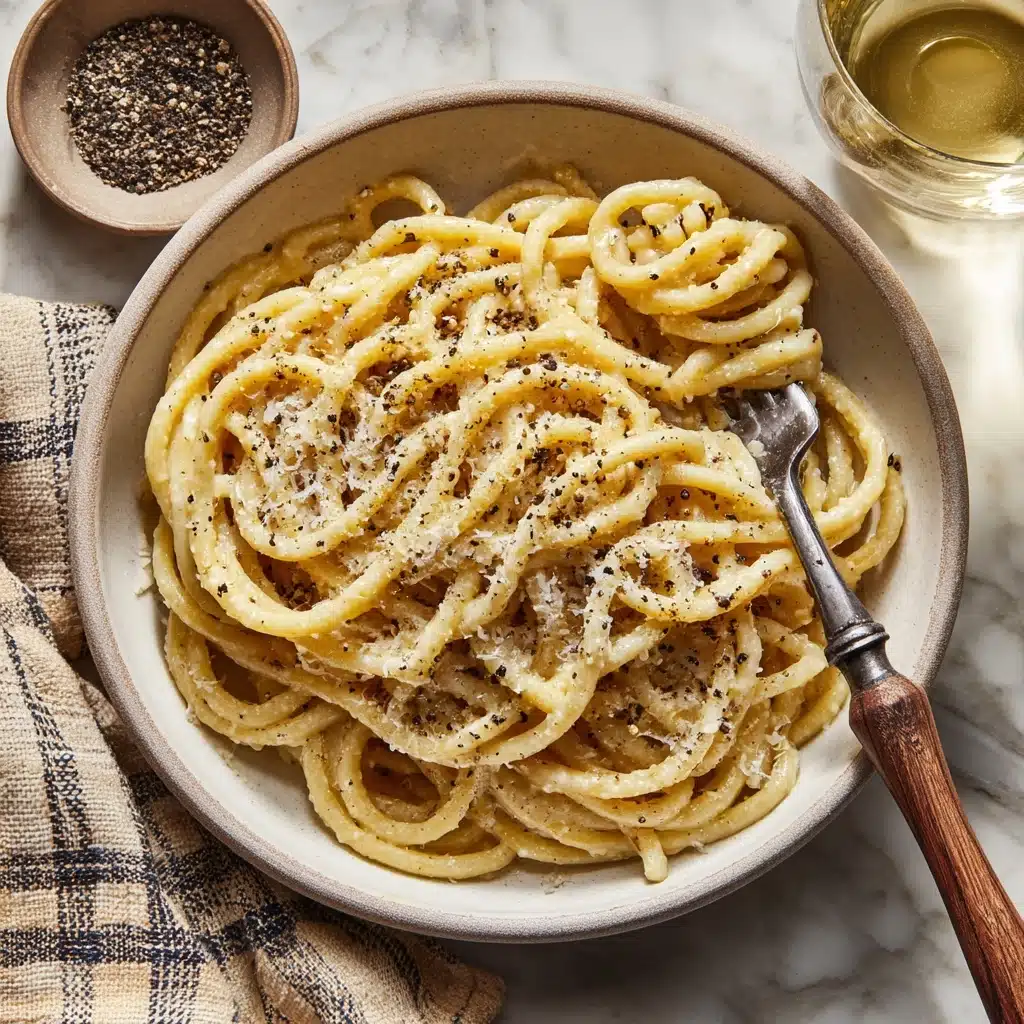
Ingredients You’ll Need
Cacio e Pepe is all about restraint and ingredient quality, so each component truly matters. With just a few staples, you create something unforgettable—salty, bracing, and utterly craveable.
- Spaghetti or tonnarelli (12 ounces): Choose a pasta with some bite; traditionalists reach for tonnarelli, but spaghetti works beautifully for this sauce.
- Pecorino Romano cheese (1 cup, finely grated): Salty, bold, and assertive—be sure to grate it freshly for the smoothest, creamiest result.
- Freshly cracked black pepper (2 teaspoons): Cracking it fresh unlocks that fragrant, warming complexity that defines Cacio e Pepe’s flavor.
- Unsalted butter (2 tablespoons, optional): A non-traditional touch for extra richness and gloss—perfect if you’re feeling a little decadent!
- Salt (for pasta water): Essential! Salting the pasta water deeply seasons each strand from the inside out.
How to Make Cacio e Pepe
Step 1: Cook the Pasta
Start by bringing a large pot of salted water to a rolling boil. Add your spaghetti or tonnarelli and stir, cooking until perfectly al dente—usually just shy of the package instructions. Most importantly, just before draining, scoop out about 1 and 1/2 cups of that cloudy pasta water and set it aside. The starchy magic in this water transforms the sauce!
Step 2: Toast the Pepper
While the pasta cooks, grab a large skillet and place it over medium heat. Add your freshly cracked black pepper and let it toast for about a minute. As it warms, you’ll notice an amazing nutty, floral aroma filling your kitchen—this small step makes all the difference in developing the iconic Cacio e Pepe flavor.
Step 3: Add Pasta Water
Carefully pour 1 cup of the reserved pasta water into the skillet with the toasted pepper—be gentle, it will bubble up! Let this mixture simmer for a moment, allowing the pepper to infuse its flavor throughout the starchy liquid.
Step 4: Toss Pasta and Cheese
Add the drained pasta directly to the skillet and use tongs to toss, making sure every strand is slicked with peppery water. Now, remove the skillet from the heat and gradually sprinkle in the finely grated Pecorino Romano, tossing the pasta vigorously after each handful. This step takes a bit of patience and quick wrist action—you want the cheese to melt gently and emulsify with the water, creating that silky, creamy sauce that makes Cacio e Pepe so special.
Step 5: Finish and Serve
If you’re opting for extra richness, stir in a couple of tablespoons of unsalted butter until melted and glossy. Assess the sauce: if it feels too thick, add more reserved pasta water a splash at a time. Once everything is lusciously coated, serve immediately, topped with even more Pecorino Romano and a fresh shower of black pepper.
How to Serve Cacio e Pepe
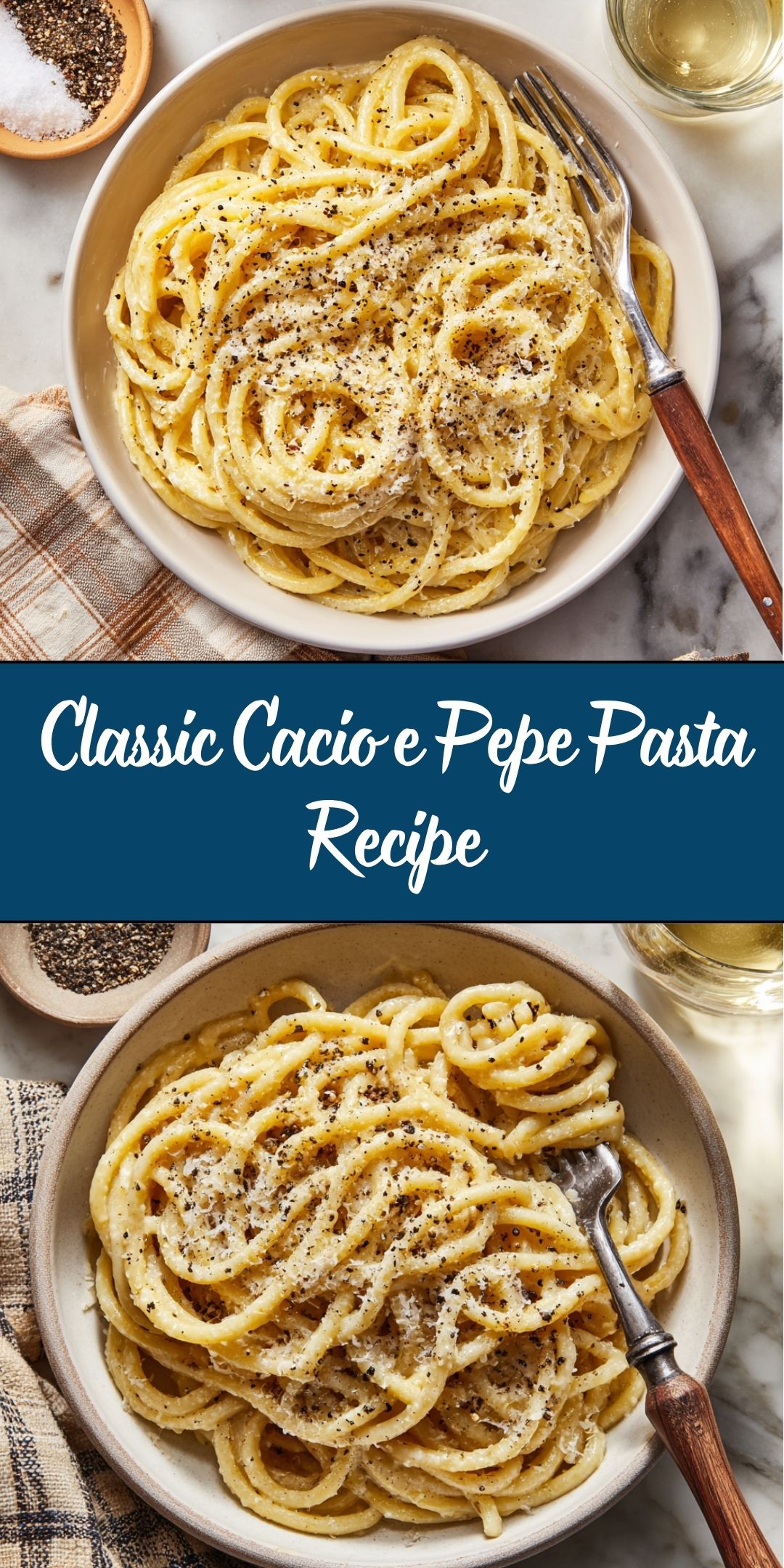
Garnishes
For an authentic finish, top each bowl with a flurry of extra Pecorino Romano and a final dusting of cracked black pepper. Some folks love a drizzle of extra-virgin olive oil for a touch of fruitiness—totally optional but delightful for added depth.
Side Dishes
Cacio e Pepe is the star of any meal, but pairing it with a crisp green salad dressed in a bright vinaigrette can balance out the richness beautifully. A crusty loaf of bread never goes unwelcome, perfect for swiping up any lingering sauce.
Creative Ways to Present
Elevate Cacio e Pepe by twirling individual portions into neat nests with tongs and serving them in shallow bowls for a restaurant-style feel. For fun dinner party flair, try serving the pasta in baked Parmesan cheese “baskets”—they’ll wow your guests in both flavor and presentation!
Make Ahead and Storage
Storing Leftovers
Transfer any leftover Cacio e Pepe to an airtight container and refrigerate promptly. While best enjoyed fresh, it will keep for up to two days, though the sauce may thicken as it sits.
Freezing
Cacio e Pepe isn’t the best candidate for freezing, as the delicate balance between cheese and water can break once thawed. For best results, make just enough to enjoy within a couple of days.
Reheating
Reheat gently in a skillet over low heat, adding a splash of hot water to loosen the sauce and restore its creamy consistency. Stir constantly to prevent the cheese from clumping or becoming grainy.
FAQs
What does “Cacio e Pepe” mean?
“Cacio e Pepe” means “cheese and pepper” in Italian, a nod to the two stars of this rustic yet lavish pasta specialty from Rome.
Is butter traditional in Cacio e Pepe?
Traditional Roman recipes use just pasta, cheese, and pepper—no butter. However, adding a bit of butter isn’t unheard of, especially if you crave a silkier, richer finish.
Can I use Parmesan instead of Pecorino Romano?
While you can swap in Parmesan in a pinch, Pecorino Romano gives Cacio e Pepe its distinct, tangy flavor. If you must substitute, look for aged, sharp cheeses to get the closest match.
How do I prevent the sauce from clumping?
Add the cheese gradually off the heat, tossing vigorously as you sprinkle it in, and use very finely grated Pecorino. These steps help the cheese melt smoothly into a creamy sauce instead of seizing up.
What’s the secret to a glossy, creamy Cacio e Pepe?
It’s all about the pasta water! The starches it contains emulsify the cheese, pepper, and fat into a shiny, cohesive sauce that beautifully coats every strand.
Final Thoughts
If you’ve never made Cacio e Pepe before, I promise this is a recipe you’ll return to again and again. There’s something magical about creating a dish so full of flavor and comfort from only a handful of well-chosen ingredients. Don’t be surprised if it becomes your new go-to for easy weeknights and special dinners alike—enjoy every twirl!
Print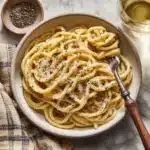
Waffle Recipe
- Total Time: 20 minutes
- Yield: 4 servings
- Diet: Vegetarian
Description
Cacio e Pepe is a classic Italian pasta dish featuring simple yet flavorful ingredients like Pecorino Romano cheese and freshly cracked black pepper. This recipe yields a creamy and satisfying pasta dish that is quick and easy to prepare.
Ingredients
Spaghetti:
12 ounces
Pecorino Romano cheese (finely grated):
1 cup
Black pepper (freshly cracked):
2 teaspoons
Unsalted butter (optional):
2 tablespoons
Salt:
for pasta water
Instructions
- Cook the Pasta: Boil salted water and cook pasta until al dente, reserving 1 1/2 cups of pasta water.
- Toast Black Pepper: Toast cracked black pepper in a skillet until fragrant.
- Make the Sauce: Add pasta water to skillet, then toss cooked pasta with Pecorino Romano to create a creamy sauce.
- Finish and Serve: Remove from heat, add butter if desired, and serve with extra pepper and cheese.
Notes
- Use freshly grated Pecorino Romano for the best texture.
- Work quickly when adding the cheese to prevent clumping.
- Prep Time: 5 minutes
- Cook Time: 15 minutes
- Category: Main Course
- Method: Stovetop
- Cuisine: Italian
Nutrition
- Serving Size: 1 bowl
- Calories: 520
- Sugar: 2g
- Sodium: 500mg
- Fat: 18g
- Saturated Fat: 10g
- Unsaturated Fat: 7g
- Trans Fat: 0g
- Carbohydrates: 68g
- Fiber: 3g
- Protein: 20g
- Cholesterol: 45mg
